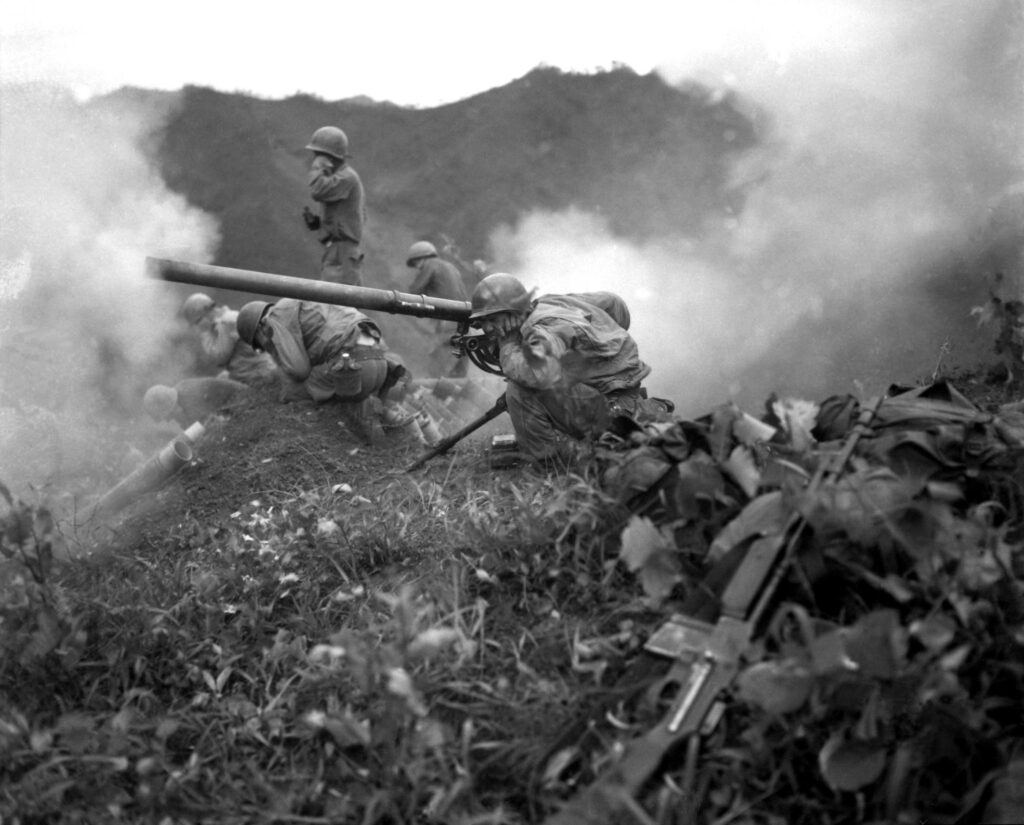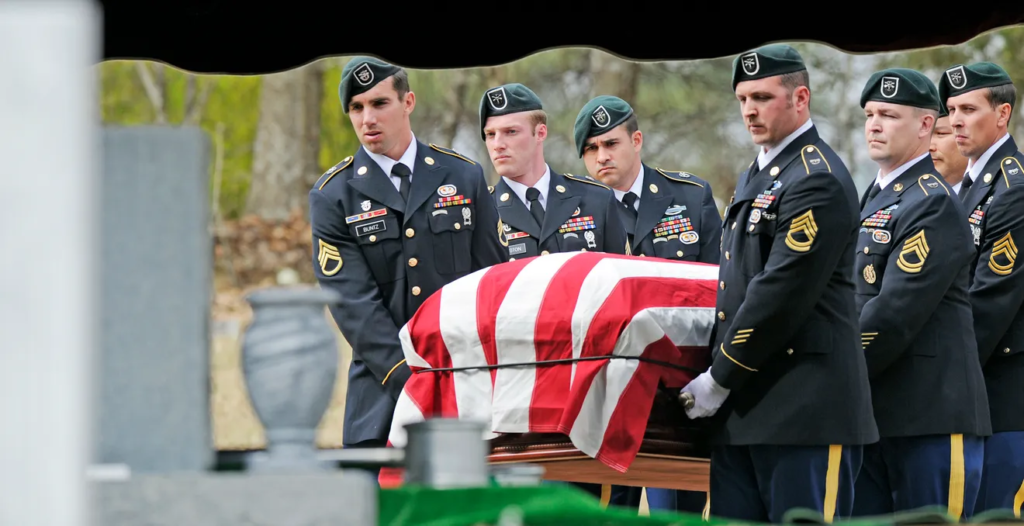Ola Lee Mize was born August 28, 1931, in Albertville, Alabama as the son of a sharecropper. He was forced to leave school after just the ninth grade to help his family put food on the table, as was very common throughout the United States in that era.
Mize’s Military Service
Mize tried several times to enlist in the Army but was rejected for being too light at just 120 pounds. He finally got in when his mother signed an affidavit to affirm his age since a tornado had destroyed all his town’s records while he was young.
But once in the Army, a bigger problem was looming. Mize was virtually blind in one eye, which had been accidentally pierced with an ice pick when he was five years old.
The vision exam for the Army at that time involved holding a paddle over one eye and looking at the chart with the other. He passed the test by briskly switching paddles in a way that made it look as if he was switching eyes. He had practiced this bit of subterfuge with spoons beforehand.


Ola Lee Mize became an infantryman in the 82nd Airborne Division and was about to finish up his tour and go back to finish schooling and attend college when the Korean War broke out. He re-enlisted in the hopes of getting sent to Korea.
He would get his wish and be involved in some horrific combat there. Assigned to Company K, 15th Infantry Regiment, Third Infantry Division, was helping to defend a strategic hill near Surang-ni in mountainous South Korea. The hill, called Outpost Harry by the Americans, sat between American and Communist lines, each several hundred yards away. Coincidentally, the 15th Infantry Regiment was the same unit that Audie Murphy served in during World War II.
During the previous few nights prior to June 10, 1953, Mize had observed numerous trucks behind the enemy’s ridgeline bringing in men and equipment. He called for artillery strikes and airstrikes, but those were denied.

A Sergeant manning a listening post that night reported something amiss. Upon investigating, Mize came up and looked to the unit’s front. “Where did all those shrubs come from,” he asked the Sergeant? They hadn’t been there before. Mize noticed one move. He crouched up and unloaded a full carbine magazine into them as Chinese soldiers, infiltrating the lines were cut down very close to the LP.

At one point, as an enemy soldier stepped behind an American and prepared to fire, Sergeant Mize killed him. At dawn, he helped regroup for a counterattack that drove the enemy away. He was personally credited with killing 65 of the enemy. In fact, it could have easily been much more. Of the 56 men on Outpost Harry, only eight survived.
When an American machine-gun nest had been overrun, he fought his way to the position, killing 10 North Korean and Chinese soldiers and dispersing the rest. He had been knocked down and wounded but not seriously three times by artillery and grenade blasts, and his men were astounded that he returned alive.
The legend that was told of Mize was that when he took back the machine gun nest, he dispatched the last of the Chinese soldiers with an entrenching tool when his weapon ran out of ammunition. There was a bronzed “E-Tool” that would hang over his desk later in his career. He did tell the local Gadsden, AL newspaper that he went “combat crazy” during the pitched part of the engagement.
“I thought I’d bought the farm,” Col. Mize told VFW Magazine in an interview. “I just knew I was going to die. I knew it. I accepted it. All I wanted to do was take as many of them with me as I could.”

He and the remaining Americans convinced the Chinese that there were many more Americans left on the hill but throwing grenades and shooting from one position and then leaping into other holes and firing from there.
He was recommended for the Medal of Honor but initially asked that his name be withdrawn, saying the honor should go to the troops that died defending it.
“That terrible night in 1953 in Korea at Outpost Harry was one I would never want to repeat,” he wrote in a foreword to “Uncommon Valor,” a book about Medal of Honor recipients.
“Too many good young men gave their lives to take or hold that miserable piece of high ground.”
Eventually, in 1954 Mize did receive the Medal of Honor from President Eisenhower and recounted that he was so nervous it was obvious to everyone. He credited the President to calm him by joking about himself.
Mize remained in the Army and became an officer. In 1962 he attended the Special Forces Officers Course training and was assigned to the 7th Special Forces Group.
In late 1963, he was assigned to the 5th Special Forces Group, where he was deployed to Vietnam on his first tour as an A-Team Leader. In 1965, he was assigned to the Special Forces Training Group, where he was the Advanced Training Committee chief for SCUBA, HALO, and the SKYHOOK schools. Mize is also credited for being the officer responsible for starting the present-day Combat Divers Qualification Course in Key West, FL.
He returned to Vietnam in 1966-67 and again in 1969 as the Commander of the 3d Mobile Strike Force Command (Cambodian Troops). The Mike Forces, as they were called, were the quick reaction force for any of the Special Forces / CIDG (Civilian Irregular Defense Group) A-Camps in their Corps area.
Mize died of cancer on March 12, 2014 at Gadsden, Alabama, aged 82.

Col Ola Lee Mize Received the Medal of Honor and Others Decorations
In 1975 Colonel Ola Lee Mize was reassigned to Fort Bragg, North Carolina, where he was initially the Special Forces School Chief for the Field Training Division and Resistance Division and later the Commander of the Special Forces School. At that time, the U.S. Army JFK Institute for Military Assistance (IMA). Later this was changed to the Special Warfare Center (SWC). Mize retired in 1981.
Colonel Mize’s awards include the Medal of Honor, Silver Star, Legion of Merit (with Oak Leaf Cluster), Bronze Star (with four Oak Leaf Clusters), Ranger Tab, Master Parachutist Badge, SCUBA Badge, and the Combat Infantryman’s Badge (2nd award).
Colonel Mize passed away on March 12, 2014, from cancer at age 82. In addition to his wife, Betty, he is survived by his daughter, Teresa Peterson; his brothers, Gary, Donald and Johnny; his sisters, Judy Heinrich, Brenda Garza, and Della George; four grandchildren; and six great-grandchildren.
Mize’s citation can be found there.
Read About Other Profiles in Courage
If you enjoyed learning about Col Ola Lee Mize, we invite you to read about other profiles in courage on our blog. You will also find military book reviews, veterans’ service reflections, famous military units and more on the TogetherWeServed.com blog. If you are a veteran, find your military buddies, view historic boot camp photos, build a printable military service plaque, and more on TogetherWeServed.com today.

0 Comments